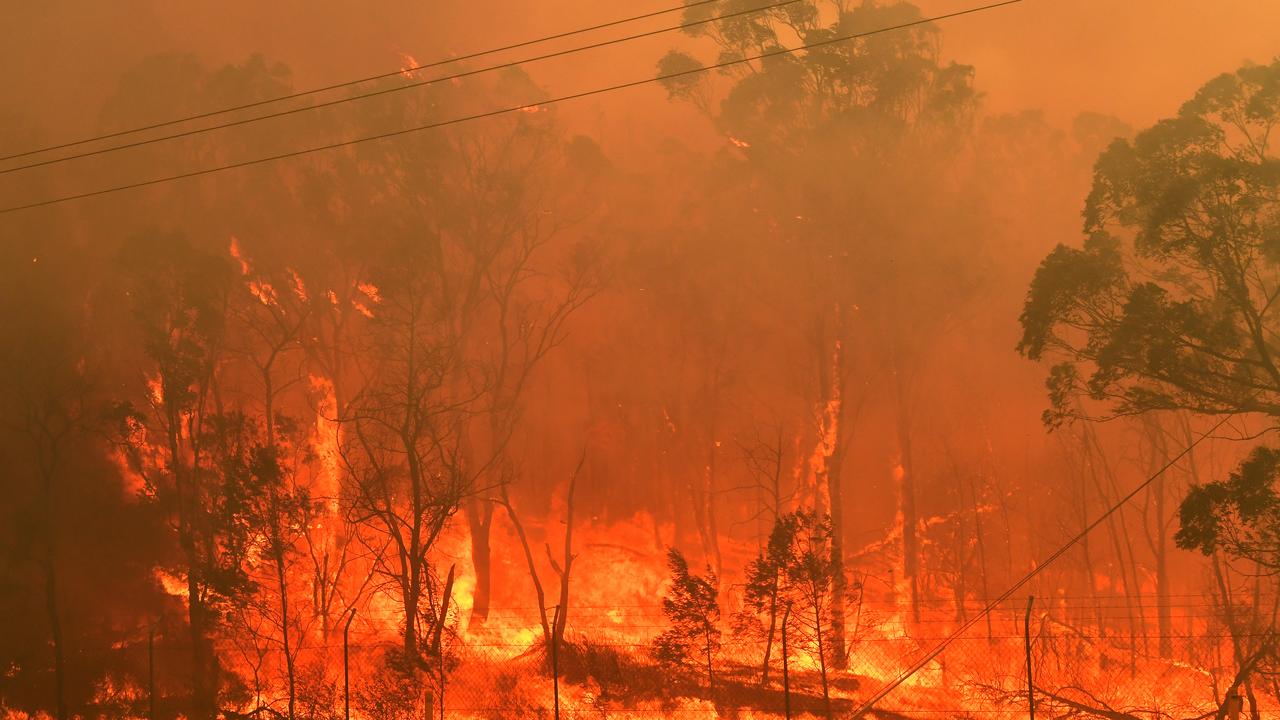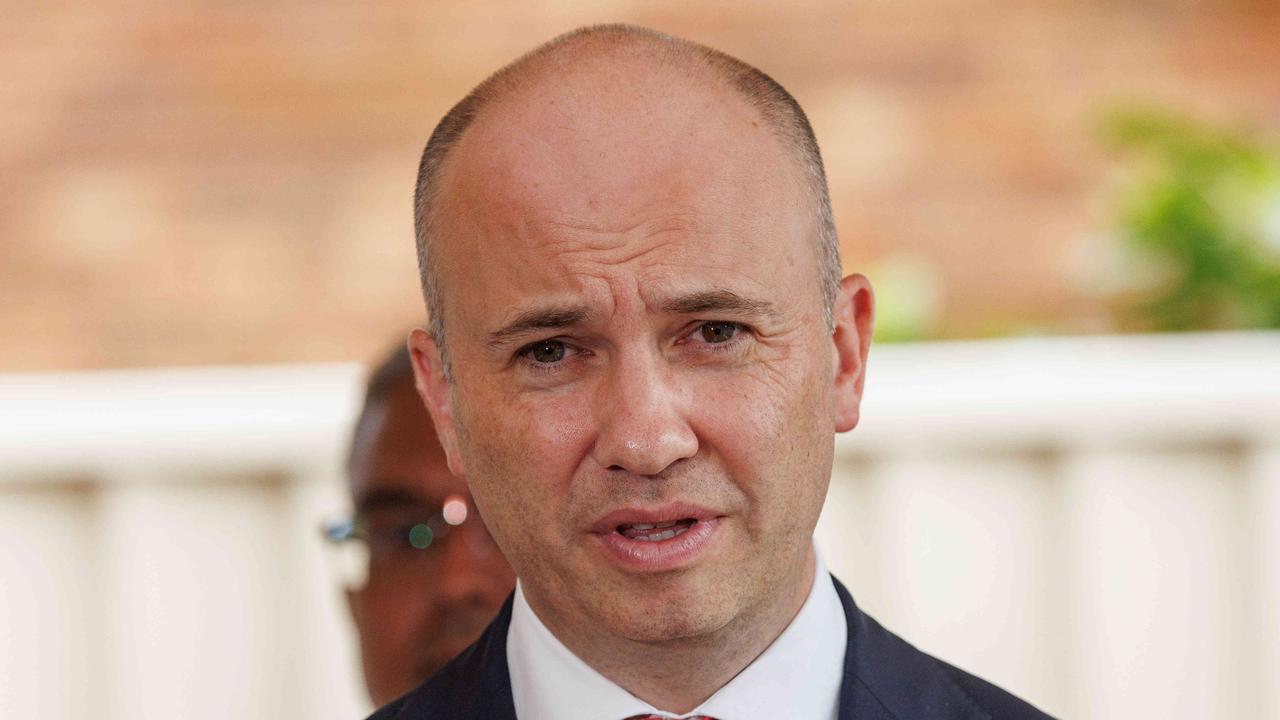The biggest climate change myths debunked
It is one of the most divisive topics in the world. But one where it can be hard to know what is true or not. Here are the biggest myths busted.

Climate change is here and now – it’s not just a future problem.
We are seeing real changes today that will only worsen as warming continues to climb, the impacts of which will be far reaching, from losing our precious Great Barrier Reef to the loss of life because of intense heat and bushfires.
Our way of life will be affected, as will our economy and unique environment.
And yet many Australians continue to deny the existence of climate change. They trot out incorrect assertions, such as that humans don’t cause climate change, and that there’s nothing Australians can do to stop it. These people have their heads in the sand.
Today, news.com.au launches its series Time Is Now, focusing on how climate change impacts Australians’ way of life. The series draws on the insights and extensive research of scientists, in special partnership with Judith Neilson Institute for Journalism and Ideas and the Australian Science Media Centre.
Here are the most common myths about climate change — and why they’re wrong.
MYTH 1: CLIMATE CHANGE ISN’T REAL AND IT’S NOT CAUSED BY HUMANS
A peer-reviewed paper published in 2016 concluded that 97 per cent of climate scientists agree climate change is being caused by human activity.
This study systematically reviewed all of the literature to examine what scientists say based on their methods and findings. The result is clear.
A number of other studies have come to vastly similar conclusions.
“Warming is unequivocal and unprecedented,” the Intergovernmental Panel on Climate Change declared in 2014.
This significant statement came after thousands of climate scientists from around the world gathered for an extensive, in-depth review of multiple lines of evidence.
This included historic changes in temperature, changes in sea level, climate model simulations, increases in atmospheric carbon dioxide and other greenhouse gases, glacier melting, ocean acidification and warming oceans, to name just a few.
There was a petition in the late 1990s signed by 31,000 so-called scientists refuting the evidence of human-induced climate change. Some of the “scientists” who put their names to the petition could not be verified, including Charles Darwin, Geri Halliwell and Mickey Mouse.
In addition, the vast majority of people to sign the petition were not climate scientists nor had ever studied the subject. Only 0.6 per cent of signatories were climate scientists.

MYTH 2: NOTHING’S CHANGED. IT’S BEEN HOT IN AUSTRALIA BEFORE
No climate scientist has ever said that Australia hasn’t been hot in the past. The continent is famed for its hot, arid and dry weather.
But it’s important not to focus on a single event when disputing climate change.
Climate scientists don’t do this when assessing how the climate has and is changing; they instead focus on decades of robust data and clear associated trends.
This points towards increasing average temperature as well as more and longer hot days, and fewer cool days.
Cherrypicking events is deeply flawed and doesn’t tell us anything meaningful about trends.

Weather is what you get. Climate is what you expect. Looking at one day, one event or a single location isn’t indicative.
What is appropriate and more accurate is collectively looking at a large number of events, over a long period of time, across multiple locations to get a clear picture of how the climate has changed.
So, yes – Australia has always been hot. But we’re seeing an increase in the frequency, intensity and duration of temperature extremes over decades.
And the number of extreme heat records outnumber extreme cool records at a rate of twelve to one.
MYTH 3: CARBON ISN’T A BIG DEAL
Carbon dioxide makes up 0.04 per cent of the Earth’s atmosphere — a tiny fraction.
The problem is that carbon is extremely potent. Think of it like red wine – a splash in spaghetti sauce won’t intoxicate you, but three glasses will.
Burning fossil fuels has significantly increased atmospheric carbon dioxide since the Industrial Revolution, and levels now are higher than at any point in at least 800,000 years.
When the Industrial Revolution began in 1850, the amount was 280 parts per million – or 0.028 per cent of the atmosphere. It’s now 413 parts per million.
We need a little bit of carbon dioxide in the atmosphere to keep the planet warm enough so it’s habitable by humans. But too much acts like a think blanket.

As energy comes in from the sun, it hits the surface of the planet and rebounds – too much carbon traps it. And it doesn’t take much for this to occur.
Carbon dioxide’s heat-trapping qualities in certain conditions, similar to those in the atmosphere, were proven in a lab in the late 1800s.
There’s carbon dioxide in the atmosphere released by natural factors, but we can track what emissions are due to human activity because it has a different fingerprint.
Unfortunately, it lasts in the atmosphere for anywhere between 50 to 200 years and the consequences of that will be felt for generations.
MYTH 4: A COUPLE OF DEGREES IS NOTHING
The conversation about tackling climate change deals with changes of 1C or 2C, which in many cases doesn’t sound significant on the face of it.
But just a small change in average temperatures is all you need for extreme events to explode in frequency and intensity.
RELATED: What a 2C rise actually means
We’ll see more deaths from heatwaves. We’ll see more sea level rises hitting areas that are low lying or underdeveloped. We’ll potentially see more intense cyclones. We’ll see more extreme bushfires.
And this is all because of average temperature increases of a couple of degrees.
MYTH 5: THE PROBLEM’S TOO BIG. THERE’S NOTHING AUSSIES CAN DO
With an issue so serious, where do we possibly start?
Any change is a good change and simple things like turning the lights off when you leave the room, only running one fridge, setting your airconditioner to 25C, opting for ceiling fans instead when possible, using public transport, eating less red meat, growing your own produce, recycling as much as possible and getting a reusable coffee cup.
RELATED: What can you do to help
If you can afford to, consider putting solar panels on your roof. Buy second hand where you can. Be mindful of your waste and compost.
It’s better for everyone to reduce their emissions imperfectly than just a few people doing it perfectly. We can’t become complacent.
If you can just do a little bit it’s better than doing nothing at all.
Dr Sarah Perkins-Kirkpatrick is a senior lecturer and ARC Future Fellow at the Climate Change Research Centre at UNSW Sydney



